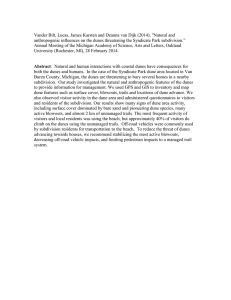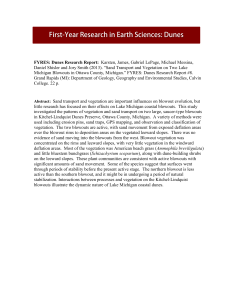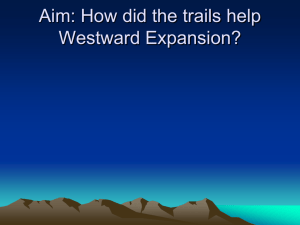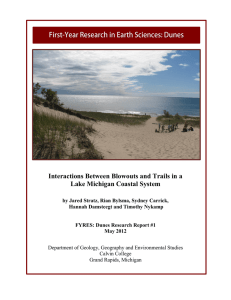First-Year Research in Earth Sciences: Dunes
advertisement
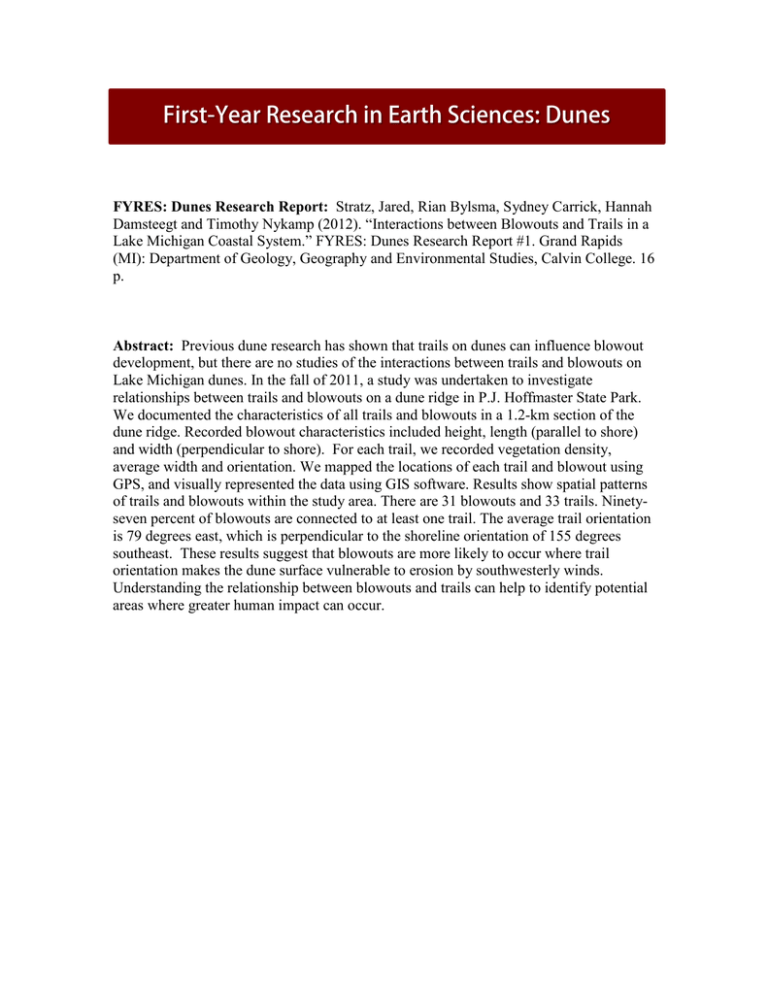
First-Year Research in Earth Sciences: Dunes FYRES: Dunes Research Report: Stratz, Jared, Rian Bylsma, Sydney Carrick, Hannah Damsteegt and Timothy Nykamp (2012). “Interactions between Blowouts and Trails in a Lake Michigan Coastal System.” FYRES: Dunes Research Report #1. Grand Rapids (MI): Department of Geology, Geography and Environmental Studies, Calvin College. 16 p. Abstract: Previous dune research has shown that trails on dunes can influence blowout development, but there are no studies of the interactions between trails and blowouts on Lake Michigan dunes. In the fall of 2011, a study was undertaken to investigate relationships between trails and blowouts on a dune ridge in P.J. Hoffmaster State Park. We documented the characteristics of all trails and blowouts in a 1.2-km section of the dune ridge. Recorded blowout characteristics included height, length (parallel to shore) and width (perpendicular to shore). For each trail, we recorded vegetation density, average width and orientation. We mapped the locations of each trail and blowout using GPS, and visually represented the data using GIS software. Results show spatial patterns of trails and blowouts within the study area. There are 31 blowouts and 33 trails. Ninetyseven percent of blowouts are connected to at least one trail. The average trail orientation is 79 degrees east, which is perpendicular to the shoreline orientation of 155 degrees southeast. These results suggest that blowouts are more likely to occur where trail orientation makes the dune surface vulnerable to erosion by southwesterly winds. Understanding the relationship between blowouts and trails can help to identify potential areas where greater human impact can occur.
